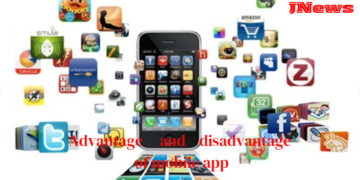A mobile app (or mobile application) is a software application developed specifically for use on small, wireless computing devices, such as smartphones and tablets, rather than desktop or laptop computers.
Mobile apps are sometimes categorized according to whether they are web-based or native apps, which are created specifically for a given platform. A third category, hybrid apps, combines elements of both native and web apps.
In today’s digital age, mobile apps are an essential part of most people’s daily lives. From social networking and entertainment to productivity and business, mobile apps play a vital role in how we interact with technology.
Introduction:
Define a mobile app and its significance in today’s digital landscape. Emphasize its role in revolutionizing how we interact with technology on-the-go.
Definition and Core Functions:
Explain what a mobile app is: a software application designed specifically to run on mobile devices like smartphones or tablets.
Functions: Highlight how apps perform specific tasks, entertain, facilitate communication, or provide services.
How are mobile apps built?
Developing apps for mobile devices requires considering the constraints and features of these devices. Mobile devices run on battery and have less powerful processors than personal computers and also have more features such as location detection and cameras. Developers also have to consider a wide array of screen sizes, hardware specifications and configurations because of intense competition in mobile software and changes within each of the platforms (although these issues can be overcome with mobile device detection).
Mobile application development requires the use of specialized integrated development environments. Mobile apps are first tested within the development environment using emulators and later subjected to field testing. Emulators provide an inexpensive way to test applications on mobile phones to which developers may not have physical access.[13][14]
Mobile user interface (UI) Design is also essential. Mobile UI considers constraints and contexts, screen, input and mobility as outlines for design. The user is often the focus of interaction with their device, and the interface entails components of both hardware and software. User input allows for the users to manipulate a system, and device’s output allows the system to indicate the effects of the users’ manipulation.
Mobile UI design constraints include limited attention and form factors, such as a mobile device’s screen size for a user’s hand. Mobile UI contexts signal cues from user activity, such as location and scheduling that can be shown from user interactions within a mobile application. Overall, mobile UI design’s goal is primarily for an understandable, user-friendly interface.
Mobile UIs, or front-ends, rely on mobile back-ends to support access to enterprise systems. The mobile back-end facilitates data routing, security, authentication, authorization, working off-line, and service orchestration. This functionality is supported by a mix of middleware components including mobile app servers, Mobile Backend as a service (MBaaS), and SOA infrastructure.
Conversational interfaces display the computer interface and present interactions through text instead of graphic elements. They emulate conversations with real humans.[15] There are two main types of conversational interfaces: voice assistants (like the Amazon Echo) and chatbots.[15]
Conversational interfaces are growing particularly practical as users are starting to feel overwhelmed with mobile apps (a term known as “app fatigue”).[16][17]
David Limp, Amazon’s senior vice president of devices, says in an interview with Bloomberg, “We believe the next big platform is voice.”[18]
Mobile apps are built using a variety of programming languages and frameworks, and they can be downloaded and installed from app stores such as the Apple App Store or Google Play.
Mobile apps are designed to provide a wide range of functions and services and with consideration for the demands, constraints and capabilities of the devices they’re built for. For example, a gaming app might take advantage of the iPhone’s accellerometer.
Other examples include games, social media platforms, email clients and banking apps. They can also be used to access information, such as news and weather updates, and to perform tasks, such as online shopping and booking travel.
How does a mobile app work?
- Development Process: Briefly touch upon the app development cycle, from idea to deployment.
- Technology Behind Apps: Explain programming languages, APIs, databases, and backend infrastructure.
Mobile apps are designed to run on specific mobile operating systems such as iOS, Android and Windows Phone. When a mobile app is downloaded and installed on a device, it is stored in the device’s memory and is launched using the device’s operating system.
When a user opens a mobile app, the app communicates with the device’s operating system and other built-in software components to access the device’s hardware and services such as the camera, GPS and internet connection. The app then uses this information to provide its specific functions and services to the user.
Types
Mobile applications may be classified by numerous methods. A common scheme is to distinguish native, web-based, and hybrid apps.
Native app
All apps targeted toward a particular mobile platform are known as native apps. Therefore, an app intended for Apple device does not run in Android devices. As a result, most businesses develop apps for multiple platforms.
While developing native apps, professionals incorporate best-in-class user interface modules. This accounts for better performance, consistency and good user experience. Users also benefit from wider access to application programming interfaces and make limitless use of all apps from the particular device. Further, they also switch over from one app to another effortlessly.
The main purpose for creating such apps is to ensure best performance for a specific mobile operating system.
Web-based app
A web-based app is implemented with the standard web technologies of HTML, CSS, and JavaScript. Internet access is typically required for proper behavior or being able to use all features compared to offline usage. Most, if not all, user data is stored in the cloud.
The performance of these apps is similar to a web application running in a browser, which can be noticeably slower than the equivalent native app. It also may not have the same level of features as the native app.
Hybrid app
The concept of the hybrid app is a mix of native and web-based apps. Apps developed using Apache Cordova, Flutter, Xamarin, React Native, Sencha Touch, and other frameworks fall into this category.
These are made to support web and native technologies across multiple platforms. Moreover, these apps are easier and faster to develop. It involves use of single codebase which works in multiple mobile operating systems.[citation needed]
Despite such advantages, hybrid apps exhibit lower performance. Often, apps fail to bear the same look-and-feel in different mobile operating systems.[citation needed]
Advantages of mobile apps
There are numerous advantages to using mobile apps, namely:
- Convenience. Mobile apps can be downloaded and installed on a device, allowing users to access the app’s functions and services at any time, from anywhere.
- Personalization. Mobile apps can be customized to meet the specific needs of individual users, providing a personalized experience.
- Offline access. Many mobile apps can be used offline, providing access to important information and features even when an internet connection is not available.
- Push notifications. Mobile apps can send push notifications to users, providing real-time updates on important information and events.
Disadvantages of mobile apps
However, there are some disadvantages and considerations to keep in mind when using mobile apps. These include:
- Limited functionality. Mobile apps are designed to provide specific functions and services, and they might not be able to provide the same level of functionality as a desktop application.
- Limited compatibility. Mobile apps are designed to run on specific mobile operating systems, and they might not be compatible with all devices.
- Security concerns. Mobile apps can access sensitive information on a device, and they might not have the same level of security as a desktop application.
- Limited updating capability. Some mobile apps might not be easily updated, and users might need to download a new version of the app to access the latest features and bug fixes.
While mobile apps offer convenience, personalization and offline access, they also have limitations in terms of functionality, compatibility, security and updating capability. Business software buyers should consider the advantages and disadvantages of mobile apps when deciding on a distribution method for their software.
As the mobile market continues to grow, mobile apps are becoming an increasingly popular way for businesses to engage with customers and employees, providing a convenient, personalized and secure way to access important information and perform tasks on the go.
Impact on Daily Life and Industries:
- Communication and Socialization: Discuss how apps have transformed communication methods and social interactions.
- Business and Commerce: Highlight the impact of apps on e-commerce, banking, and service industries.
- Healthcare, Education, and Entertainment: How apps have revolutionized these sectors.
-
Challenges and Considerations:
- Security and Privacy: Address concerns regarding data privacy and cyber security.
- User Experience (U X) and Design: Importance of intuitive design for user engagement.
- Market Saturation and Competition: The growing number of apps and standing out in a crowded market.
Future Trends:
- Technological Advancements: Explore emerging technologies like AR/V R, AI, and Io T influencing mobile app development.
- User Experience Improvements: Predictions on enhancing user experience through personalization and customization.
Conclusion:
Summarize the significance of mobile apps in modern society, reiterating their impact on various aspects of daily life and their continuous evolution in the tech landscape.
Ensure to use examples, statistics, and real-life scenarios to make the article engaging and relatable to readers of varying tech knowledge. Providing practical insights and a clear understanding of mobile apps will make your article informative and valuable to a broad audience.

































